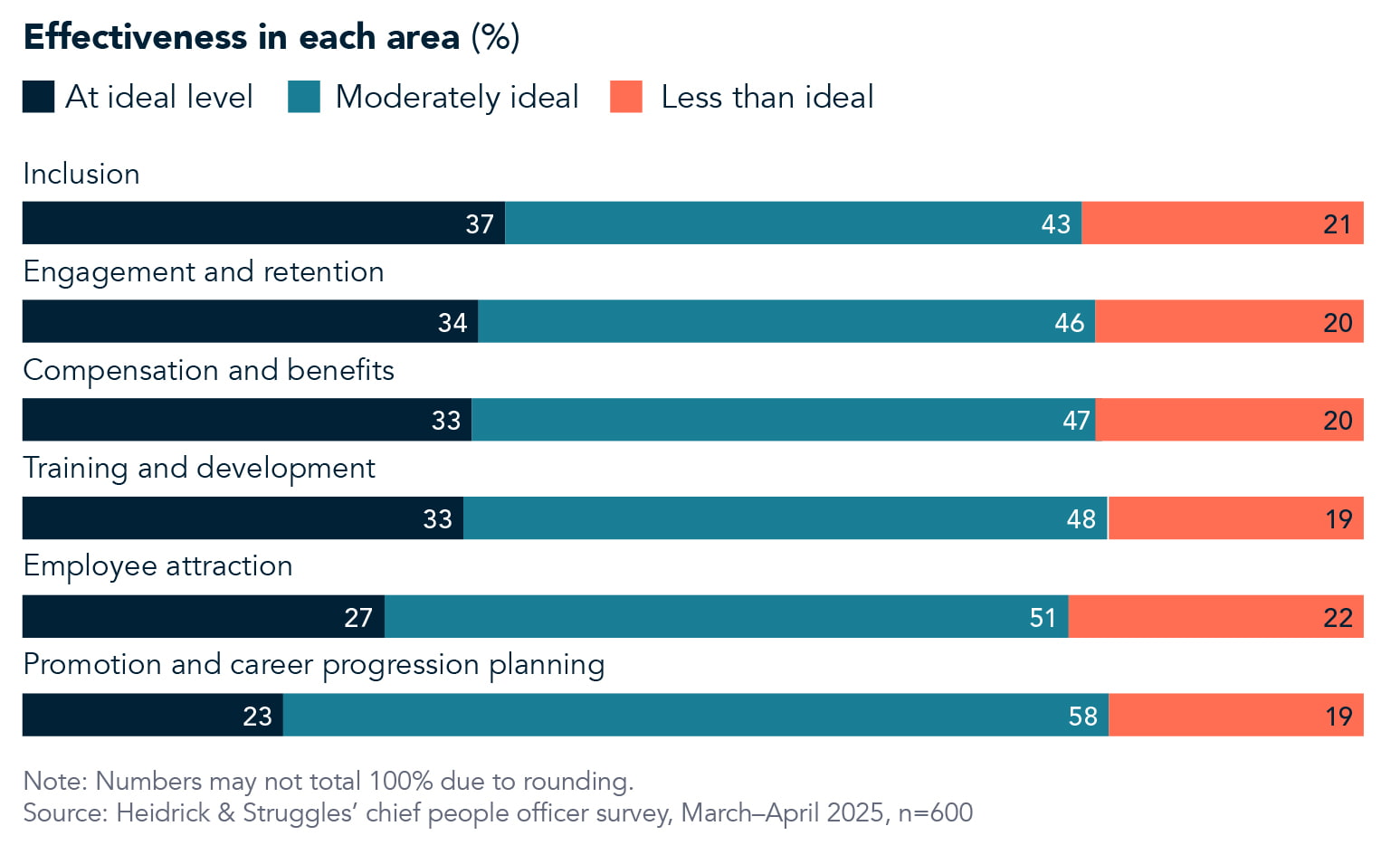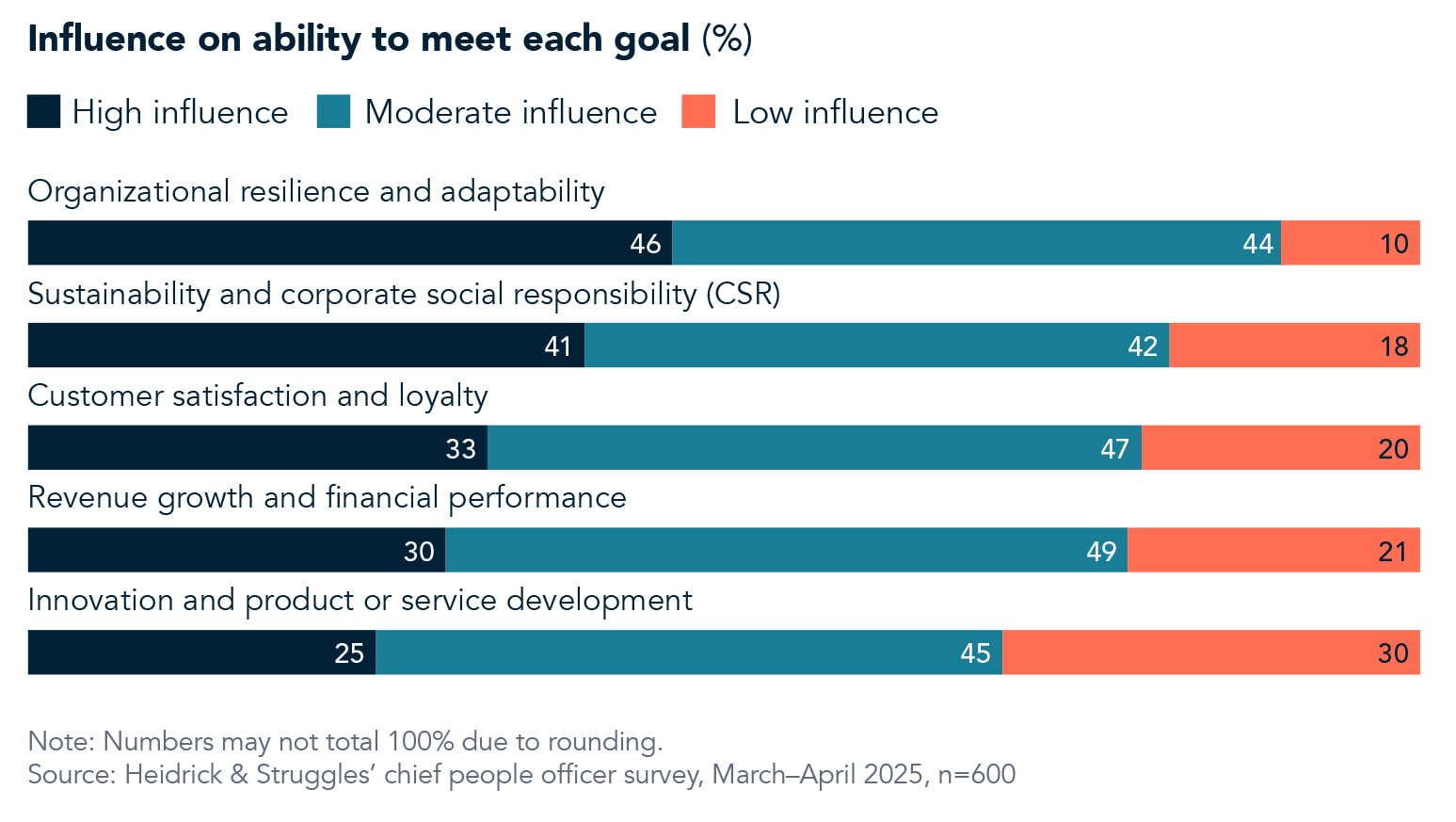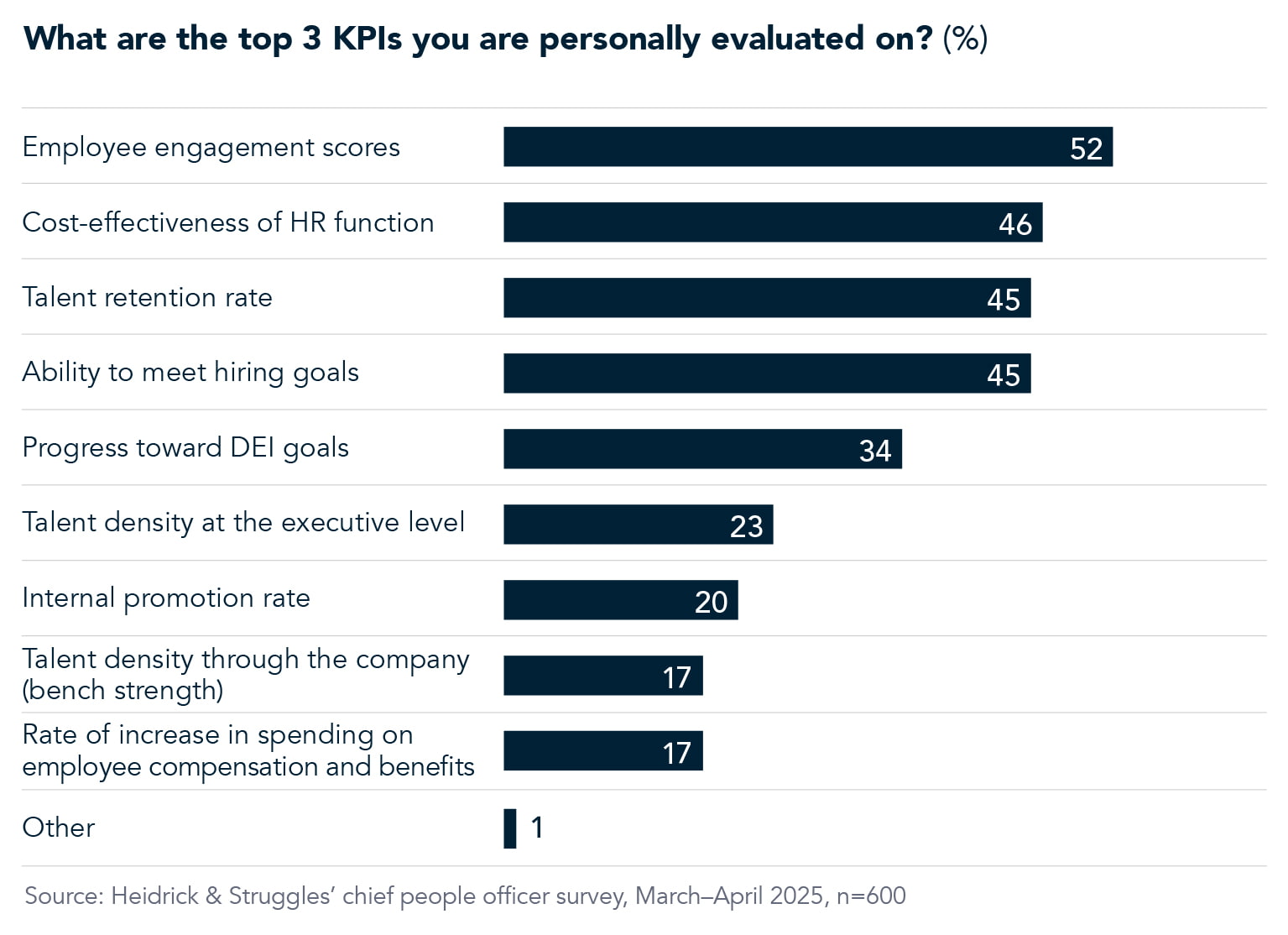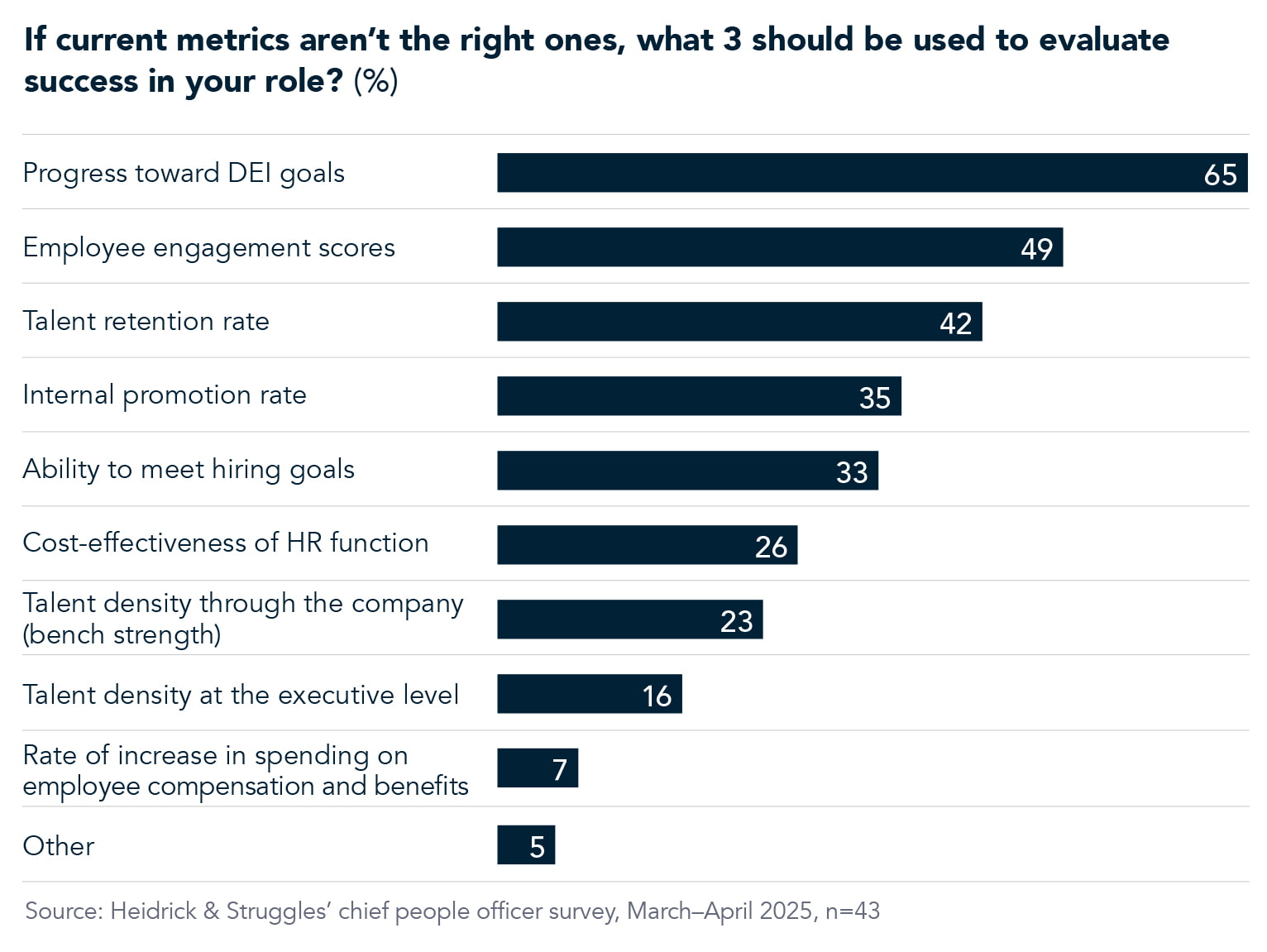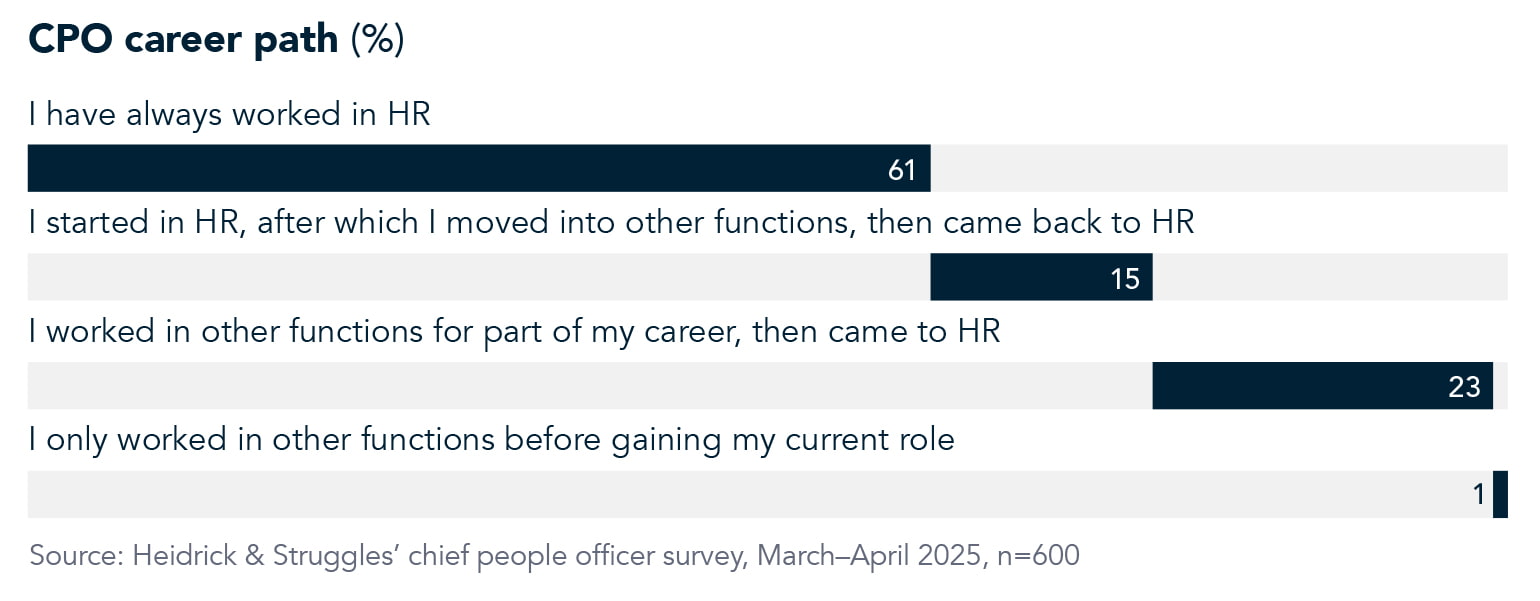Human Resources Officers
Chief people officer monitor: Building HR functions that are effective and strategically influential
Chief people officers’ core job is making sure their organization has the talent it needs to deliver. Yet CPOs aren’t notably confident that their company’s executive attraction, retention, development, and succession planning processes are positioning them well for the future—and neither are CEOs and board members.1
A recent survey of 600 CPOs in markets around the world found that CPOs are, in many ways, still focused on a view of their function as a utility for the company, rather than as a strategic enabler. But the playbook for what were once known as “academy” HR companies—the exemplars of success—doesn’t meet the needs of organizations today, as so much is changing so fast. A strategic lens and strategic influence are now crucial to ensuring companies have the talent they need, which we have explored in depth elsewhere.2
So, it’s encouraging that the survey—and follow-up conversations with some leading CPOs—also suggest some steps CPOs can take to become highly effective at traditional HR activities and highly influential in helping the company achieve its strategic goals.
Most notably, it’s clear that effectiveness and influence go hand in hand. CPOs can’t thrive by building a function that gets the nuts and bolts right in the hope of it serving as a foundation for later strategic success. Nor can they thrive by diving in at the top, without focusing on making sure people get hired and paid and stay engaged.
CPOs need to focus in three areas, the data suggests, to develop a function that will be able to deliver on both levels. CPOs themselves also highlight a few key capabilities that will help them grow.
HR is doing okay today—but has significant room for improvement
CPOs most often see their organizations as having credibility in the business, and least often as good at tracking external trends.
CPOs generally rate their effectiveness at traditional HR functions as average.
And, on the whole, CPOs say they have moderate influence on the company’s ability to meet most strategic goals.
Taken together, it’s clear that CPOs think their functions have a lot of room for improvement, not only on meeting newer strategic demands but also in the traditional areas they have long focused on.
Do CPOs still see their function as a utility?
In our experience, many companies stopped making large investments in talent management in the wake of the 2008 financial crisis; some have never returned to investing at pre-2008 levels.
- That means that for half or more of most CPOs’ careers, they have been working in a cost-constrained environment, even as expectations and challenges have expanded exponentially.
- Today, survey respondents report that HR budgets typically range from 0.35% to 0.75% of overall company revenue, averaging just 0.61%—a relatively small share given the increasing complexity and strategic demands placed on the function.
- Ninety-three percent of CPOs agree that it’s right that they are most often evaluated on metrics tied to traditional functional priorities, including employee engagement and cost effectiveness.
Even among the 7% of CPOs who think other metrics would better evaluate success, the metrics they choose instead are still tied to traditional HR goals and not directly related to driving business success.
Yet many CPOs also know there are more strategically focused metrics that would better showcase their value and perhaps encourage more investment. Talent density is one metric that comes up frequently in our conversations. CPOs who responded to the survey added that:
- “The loss of revenue due to people management has increased the importance of people management skills. I think this is a powerful showcase on the value proposition of the CPO.”
- “When we started focusing more on employee development and career paths, HR’s involvement in long-term planning became clear. The board now recognizes HR’s strategic value.”
What’s holding back change?
One reason, we believe, is that the majority of CPOs have spent their entire career in HR, and too many have not had the time or resources to explore and advocate for alternatives.
But even CPOs who come from other backgrounds view traditional KPIs as the right measures of their performance.
The bigger issue—and one that should be encouraging for CPOs seeking to build functions that will be fit for future purpose—is that no one else has taken the time to make the links between business strategy, HR strategy, and metrics either. As one leading CPO told us, “When you have greater credibility, when the CEO wants you in the room all the time, when they’re talking behind closed doors about the value your function is adding, then the board reaches out to you.” So, if CPOs can improve performance in an area that is also a board priority, they should be able to build their case for broader influence and budget, from which more relevant KPIs will follow. The place to start, we think, is at the core of their mission: executive attraction, retention, development, and succession planning.
When CPOs have bigger ambitions, they get better at everything
To succeed as a CPO today, it’s crucial not to stay confined to the traditional HR lane. Building enterprise-wide credibility often means stepping into broader organizational challenges. That kind of leadership gets noticed—by the CEO, the board, and peers— and it opens the door to greater influence beyond just HR. Over time, you’re not just the person presenting on succession planning or employee engagement; you’re the person the board seeks out for insight. However, influence doesn’t automatically come with the CPO title. You earn it by adding real value and doing the right things.
One CPO who responded to the survey provided this insight: “To drive meaningful change, alignment with the CEO’s goals, particularly revenue and EBITDA targets, is crucial. Quarterly board meeting agendas focus on strategic priorities tied to these goals, with pre-socialized feedback ensuring efficient decision-making. HR must transition from traditional HR activities, such as performance management and surveys, to aligning its initiatives with the CEO’s objectives, such as fostering a culture of continuous feedback and cascading goals from the top. Additionally, HR should provide technology-related tools to support alignment and facilitate progress, solidifying its role as a strategic partner.”
One leading CPO we spoke with recalled a time when the product teams at her company weren’t working well with the GTM teams, resulting in products not being launched well. She took on coordination, had weekly calls, and got others, like the customer success team, involved. Doing this earned enterprise-wide credibility as well as the trust of key decision makers.
However, none of that matters if your HR house isn’t in order. It’s essential to prioritize operational fundamentals, such as filling critical roles and having the right team structure, and where around the world to find the talent you need, in addition to tackling strategic frameworks like competency models. Many CPOs miss this, but they will be held accountable if the basics aren’t covered, regardless of any broader contributions they make. Building a strong, trusted team, pulling not just from HR but from business and consulting backgrounds, is key to delivering results. The goal should be to expand, not to replace traditional skills.
What it takes to be a strategic CPO today
A strategic CPO is the intersection of influence and effectiveness, and our survey finds that these most often rise together, not sequentially. In other words, CPOs don’t become effective and then become influential as a result. They build both simultaneously. The path to strategic influence for CPOs is not simply about adding new strategic items to their plate, but about executing existing responsibilities—such as talent attraction, management, retention, and learning and development—exceptionally well and elevating them by linking them to future growth, competitive differentiation, and enterprise risk management.
The survey data identifies three attributes of the HR function that are top predictors of both influence and effectiveness:
- Agility
- The ability to adopt new technologies effectively
- Being important to the organization’s management of material risks
Fewer than half of CPOs strongly agree their function is good at any of these today, suggesting that to bolster the function’s overall strength, these are a good place to start.
The CPOs we talked with also highlighted a few specific skills CPOs themselves need today that go beyond traditional HR expertise.
Understanding of the business. Effective leaders at any organization must have solid foundational knowledge about how the company works. This should not be limited to overall strategic or performance goals, but also include topics such as how the business units work, how products are developed and launched, and what the organization’s key challenges are at present. They also should understand the priorities of their peer C-level leaders at the organization.
Understanding of the global workforce. Leaders who have an understanding of where to source cost-effective and quality talent outside the United States will be indispensable for future company success.
First-principle thinking. What we hear CEOs asking for most often today in terms of CPO capabilities is first-principle thinking—for example, starting without assumptions, being data driven, and intellectually curious.
Technology capabilities. More and more of CPOs’ work in any industry involves building or buying technology, especially as it relates to recruiting and performance management. AI and data are also becoming increasingly important in all realms of business. This means that CPOs need to be digitally fluent enough to at least ask the right questions.
Perhaps most important, being able to make a business argument is not enough. CPOs need to have the courage to speak up, making their argument, and then fighting for their strategy. The situation described earlier of the CPO stepping up to manage the product teams and GTM teams to improve product launches is a perfect example of a leader stepping into an unexpected role to add value to the organization. If CPOs do not have the confidence to advocate for their ideas, they may allow others to browbeat them or fill the vacuum of influence left by their silence.
About the authors
Brad Warga (bwarga@heidrick.com) is a partner in Heidrick & Struggles’ San Francisco office and co-head of the global Human Resource Officers Practice.
Jennifer Wilson (jwilson@heidrick.com) is a partner in Heidrick & Struggles’ Dallas office and co-head of the global Human Resources Officers Practice.
References
1 “CEO and board confidence monitor 2025: Persistent concerns, pockets of increased confidence,” Heidrick & Struggles, February 5, 2025, heidrick.com.
2 Emma Burrows, Sandra Pinnavaia, Sharon Sands, Brad Warga, Jennifer Wilson, and Darren Ashby, “Chief people officer of 2030: Building a tool kit to get from here to there,” Heidrick & Struggles, February 20, 2025, heidrick.com; and Brad Warga and Jennifer Wilson, “The next evolution of HR leadership: The connecting HR leader,” Heidrick & Struggles, September 19, 2024, heidrick.com.

